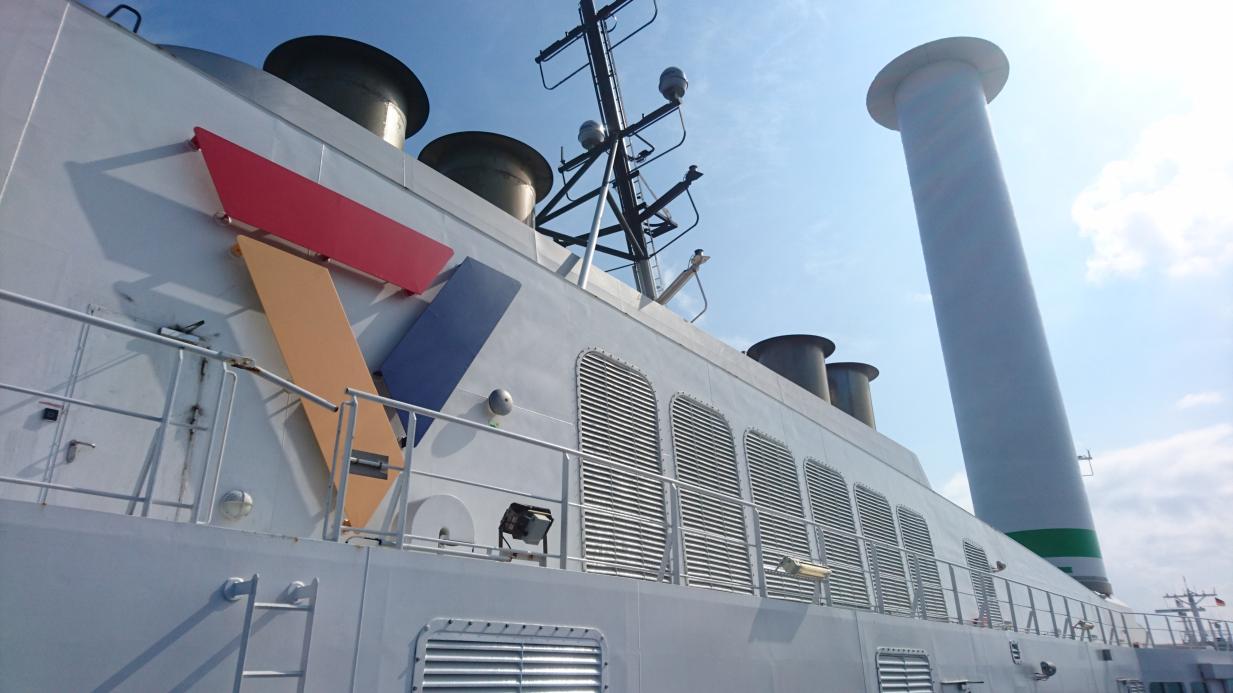
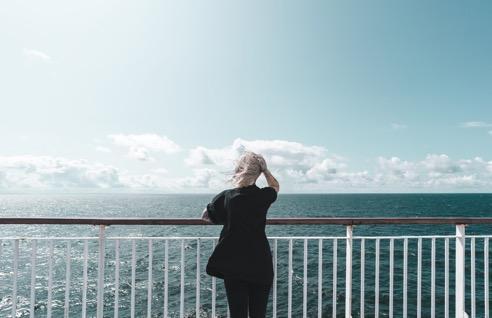








Dear reader,
On the following pages, we have gathered a range of information about Scandlines.
The press kit consists of four parts:
• In the first section you will find information about our management team, key figures and Scandlines’ history.
• In the second section we present an overview of how we work with sustainable solutions at sea and on land with the goal of emissions free ferry operations.

• In the third section we present our ferries, ports and BorderShops.
• The fourth section is for readers who would like to have a detailed understanding of the technical solutions used in Scandlines, such as the hybrid system, thrusters, rotor sail and scrubber system.
• You will find our photo bank and press releases on our press site. Here you can also sign up to receive our press releases.
If you want to know more, visit our website or contact us via the contact information below.
Kind regards,
Scandlines press@scandlines.com
+45 26 777 000 (cannot receive text messages)


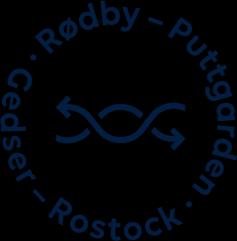
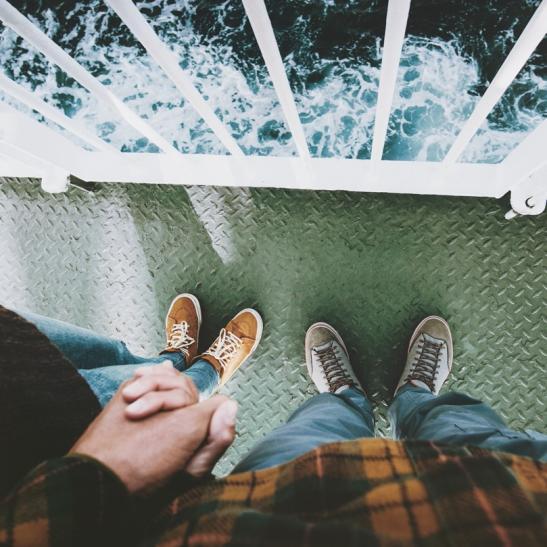

With the motto ‘The best break on the journey’, we transport more than 6 million passengers across the Baltic Sea on the Puttgarden-Rødby and Rostock-Gedser routes every year
Scandlines is a modern and innovative ferry operator with a green vision for the future. We have a proud culture based on a strong German-Danish cooperation and a maritime history dating back to 1872.
Scandlines operates two ferry routes with a high capacity and frequency. Six of our ferries are hybrid ferries and two are fitted with an innovative rotor sail – which contributes to making our ferries greener.

In 2025, our first zero direct emissions ferry, which is currently under construction, will become operational on the PuttgardenRødby route.
Our core business is to provide an efficient and reliable transport service for both passengers and freight customers. The focus for all our activities – on board the ferries as well as in our BorderShops – is to give our customers a great experience.
With 37,500 departures on seven ferries, Scandlines in 2024 transported close to 6.4 million passengers, over 1.6 million cars and 700,000 freight units on the routes Puttgarden-Rødby and Rostock-Gedser.



Eric Grégoire, CEO



Heiko Kähler, Managing
Director



This 18.5km crossing takes 45 minutes with multiple departures every day, 24/7 throughout the whole year – that means 31,200 departures a year. The route is operated by four hybrid ferries and one diesel-freight ferry. In the beginning of 2025 the new zero direct emissions ferry will become operational. This route is also called the ”beeline”.
This route is 42 km long and the crossing time is two hours. There are departures every two hours resulting in 6,500 departures every year. Two of the world’s largest hybrid ferries have been operating this route since 2016: M/V Berlin and M/V Copenhagen. A rotor sail has been installed on both ferries in 2020 and 2022 respectively. The hybrid ferries have double the capacity compared to our previous ferries on this route.



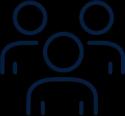












1903
Bilateral co-operation between Germany and Denmark starts with the first rail ferry link between Warnemünde and Gedser.
1963
The “beeline” opens between Puttgarden and Rødby
1993
Merger of the ferry services of the two German rail companies into “Deutsche Fährgesellschaft Ostsee GmbH” (DFO).
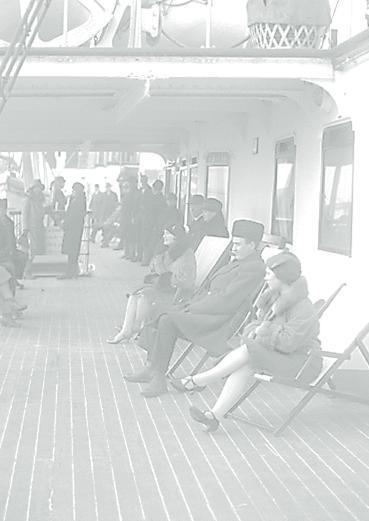
1997
Outsourcing of DSB Rederi A/S and change of name into Scandlines Danmark A/S.
1998
Scandlines AG is established through the merger of DFO and Scandlines Danmark A/S.
2007
Scandlines is sold to Allianz Capital Partners (ACP), 3i Group plc (3i) and Deutsche Seereederei (DSR).
2012
Baltic freight routes are sold to Stena Line and Swedish Orient Line.

2013
50th anniversary of the “beeline” Puttgarden–Rødby 3i becomes sole owner of Scandlines ApS.
2014
All passenger ferries on Puttgarden-Rødby are now hybrid ferries.
2015
The route HelsingørHelsingborg is sold to First State Investments.
Scandlines is sold to an investor consortium consisting of Igneo Infrastructure Partners, Federated Hermes and 3i.
2016
Two new hybrid ferries begin operations on Rostock-Gedser.
The hybrid ferries M/V Copenhagen and M/V Berlin are equipped with a rotor sail.


Scandlines is a pioneer in green ferry operations. Since 2011 Scandlines has worked on a green company strategy that includes the goal of emissions free ferries. In 2022, we committed ourselves to zero direct emissions before 2040. Our Puttgarden-Rødby route will already not generate any direct emissions in 2030. Our first zero direct emissions ferry will start operating in 2025.
The conversion of our ferries into hybrid technology in the years 2013-2016 was the first step towards emissions free ferry operations. Scandlines’ hybrid system combines traditional diesel power with electric battery power and as the first shipping company in the world we could store large amounts of excess energy in batteries on board. The hybrid system optimises the propulsion of the ship’s engines, ensuring maximum fuel efficiency.
Today, six out of Scandlines’ seven ferries are hybrid ferries, thus Scandlines owns and operates the world’s largest hybrid fleet.
In addition, Scandlines owns two of the world’s largest hybrid ferries, M/V Copenhagen and M/V Berlin, operating the Rostock-Gedser route. The two ferries were equipped with a rotor sail in 2020 and 2022 respectively, which further reduces the CO₂-emissions on the route.
For a number of years, Scandlines has cooperated with NABU, the German Nature And Biodiversity Conservation Union (Naturschutzbund Deutschland e.V.). The cooperation has resulted in the continuous development of the company’s green initiatives. Among other things, NABU has advised Scandlines regarding the transition from traditional diesel propulsion to hybrid propulsion.
The goal for both parties: Zero direct emissions ferries within a few years.
Scandlines is also working on reducing the negative impact on the environment in other areas and is committed to supporting 13 United Nation’s Sustainable Development Goals working for a sustainable future.





Scandlines is committed to achieving our company-wide zero direct emissions vision by 2040. Our Puttgarden-Rødby route will already be emissions free in 2030. We aim to lead the way on the transformation of climate neutral activities. Our expected green investments of 500 MEUR until 2025 remove direct scope 1 and 2 emissions. This will display our technological progress in order to secure our position as a true pioneer in green ferry operations. The illustration below shows the most important milestones on our journey so far and our objectives for 2030 and 2040.
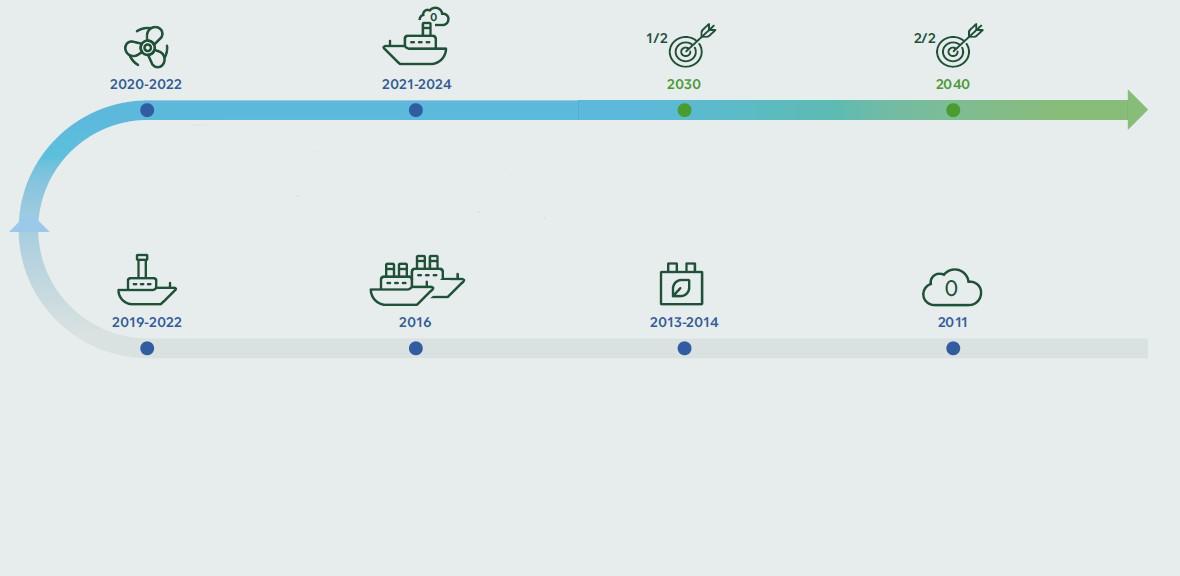
New pull-thrusters on 4 passenger ferries on Puttgarden- Rødby give less noise and vibration and reduce the CO2-emissions by 15 %.
World’s most energy efficient ferries
After being equipped with a rotor sail both hybrid ferries on the Rostock-Gedser route are some of the world’s most energy efficient ferries. The rotor sail generates propulsion and reduces CO2emissions by an average of 4 %.
2021-2025
New zero direct emissions freight ferry on PuttgardenRødby is under construction and will become operational in 2025.
Emissions free ferry operations on Puttgarden-Rødby through further electrification of the fleet and transition to plug-in hybrid ferries.
Two modern hybrid ferries start operating on the RostockGedser route, resulting in a reduction of approx. 66 % of the fuel consumption per crossing per car.
Visionary hybrid ferries on Puttgarden-Rødby combine diesel power with electric battery power. Excess energy is saved in the batteries on board, reducing CO2-emissions by up to 15 %.
Emissions free operations company-wide
Launch of goal of emissions free ferry operations
Focus on reduction of the energy consumption for propulsion and operation on board as well as green and alternative energy sources, charging facilities and efficient storage systems.


In 2025, the new freight ferry will become operational on the Puttgarden-Rødby route. The ferry is being built at the Cemre Shipyard in Turkey and was launched in November 2023.
The ferry will be equipped with a 10 MWh advanced battery system. The battery can be charged in just 17 minutes in Rødby.
From 2025 the ferry will also be able to charge in Puttgarden. This will reduce the charging time to just 12 minutes in each port and allow the ferry to cover the 18.5 km between Puttgarden and Rødby in 45 minutes with zero direct emissions which supports our goal to operate the route without direct emissions by 2030.


Facts about the zero direct emissions ferry:
• Length: 147.4 m
• Breadth: 25.4 m
• Design draft: 5.30 m
• Freight capacity: 66 freight units (abt. 1,200 lane meters)
• Max. number of passengers: 140
• Service speed: 16/10 knots
• Crossing time: 45 minutes (as of 2025)
• Battery system: 10 MWh
• Charging time in port: 12 minutes (as of 2025)
• Direct emissions during the crossing: 0
• Project investment: 80 MEUR


Scandlines closely monitors technological developments and continuously optimises its ferry operations in terms of energy efficiency.
Scandlines is now taking the next big step on the green journey, converting two of the four passenger ferries operating the PuttgardenRødby route into plug-in ferries so that they can charge both in Puttgarden and Rødby. On average, the batteries of the ferries will be charged in just 12 minutes with at least 80 percent of the energy needed for a crossing.
To make this possible in just 12 minutes, Scandlines is investing in the following:
• Large energy storage system on board both ferries
• Ferry charging facilities on board and at the ferry berths in Puttgarden and Rødby

Facts about Scandlines’ electrification project:
• Electrification of two of the four passenger ferries operating the Puttgarden-Rødby route
• Service speed: 18.5 knots
• On-board energy storage system: 5 MWh on both ferries
• Charging in port (Puttgarden and Rødby): 12 minutes
• Investment: EUR 31 million. The German Ministry of Transport has awarded the project financial support as part of a funding programme, aimed at promoting the Sustainable Modernisation of coastal vessels to reduce emissions. The programme covers up to 40 percent of the conversion expenses.
- Scandlines has a clear vision – green ferry operations


To broaden our Green Ambition, we have developed six key focus areas to reflect the most relevant and important aspects of sustainability across the entire organisation of Scandlines.
Through our continuous efforts and implemented projects in our focus areas, we also contribute to the achievement of 13 of the 17 United Nations’ Sustainable Development Goals within the ambition’s 2030 timeframe.
Our 6 key focus areas:
1. Environmental Protection
We are committed to protecting the environment, particularly in relation to the preservation of our marine environment, by taking precaution to prevent spills on- and offshore. We also aim to reduce our environmental impact in other areas, such as biodiversity, water and emissions.
2. Health and Safety
The safety of our employees, workers, customers, vendors, and other stakeholders are of paramount importance to us and we are committed to do everything possible to ensure their physical, mental, and emotional well-being.
3. People
Being the principal employer in some of the regions where we operate, we have a high responsibility towards our employees providing stable employment, decent work environment including equal treatment and provision of relevant education and development opportunities.
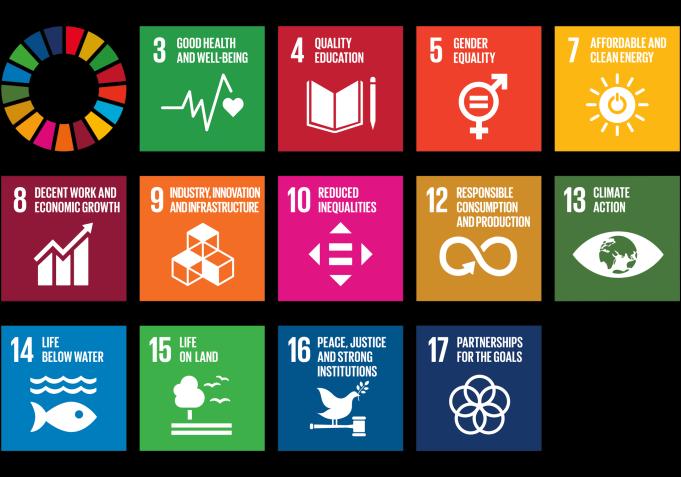
4. Customer Satisfaction
We engage with customers and support their aspirations to travel responsibly and we are focussed on ensuring customer retention and satisfaction by providing safe, efficient, and environmentally friendly transportation combined with a varied retail and catering offering.
5. Compliance and Ethics
We never compromise on our commitment to honest and ethical behaviour, and we comply with all relevant anti bribery laws in all jurisdictions in which we do business.
6. Healthy Supply Chains
With more than 1,500 vendors, Scandlines has a responsibility to ensure fair competition and contracts, which consider environmental principles, ensure the health and safety of workers and employees of vendors and ensure that human rights principles are adhered to.


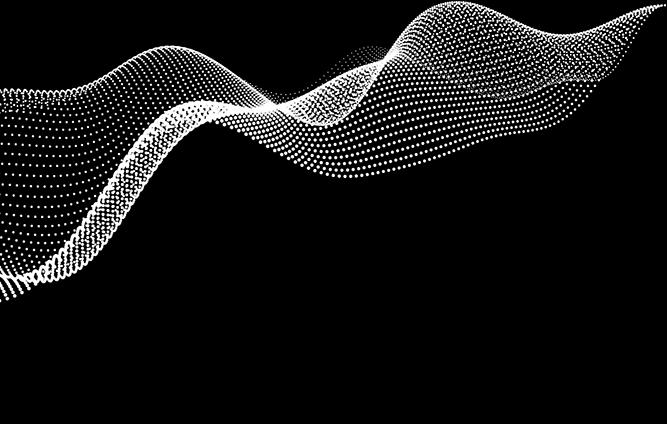
Besides working on ambitious goals for emissions free ferry operations, Scandines is also working on making other areas of its business more sustainable. Hence we are continuously launching other initiatives to, for example, reduce food waste, increase well-being at work, offer our BorderShop customers easy charging of their electrical cars and increase biodiversity through more green areas in our ports.
Below you can see two examples of our green initiatives.
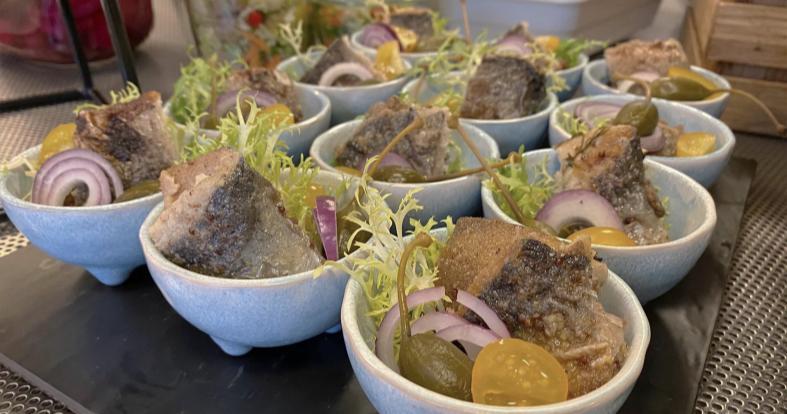

We reduce food waste by serving individual portions made to order, putting out smaller quantities of food at the buffet and by having a slightly smaller selection to choose from. We use the same principles in our mess and canteens as in our restaurants on board. Green port in Puttgarden
In the Port of Puttgarden, we work on measures to improve sustainability and increase green areas. A grass area of 1 hectare has been turned into a colourful field of wild flowers. More than 40 nesting places for bats and swifts have been provided as well as the construction of insect hotels.



Construction

Construction





Construction year & ship yard
Orskov Yard
Port of registry/flag Rødby/Danish
Construction year & ship yard
Orskov Yard
Port of registry/flag Rødby/Danish





Construction year & ship yard 1997/2003 Van der Giessen de Noord, Holland
Port of registry/flag Puttgarden/German
Gross tonnage 15,187
Engines 2 pc. MaK, type 8M32 1 pc. MaK, type 9M32CCR 1 pc. MaK, type 6M32
Construction year & Ship yard 1997/2003 Van der Giessen de Noord, Holland
Port of registry/flag Puttgarden/German
Gross tonnage 15,187
Engines
type



Besides our six hybrid ferries, Scandlines also owns the freight ferry, M/V Kronprins Frederik for the transport of freight units and classified goods on the route PuttgardenRødby. By doing so, we can increase the capacity on our hybrid ferries for the benefit of our car and freight customers. This ferry also functions as replacement ferry on the Rostock-Gedser route. In 2025, a new freight ferry, designed to operate 100 percent emissions free, will start operating on the ”beeline”.

Construction year & ship yard
1981/1998/2004 Nakskov Shipyard Denmark
Port of registry/flag Rostock/German Tonnage 16,071




Scandlines owns the port areas in Rødby, Gedser and Puttgarden. With 6 million passengers every year, the port in Puttgarden is one of the most important ferry ports in Germany. In Rostock port, Scandlines uses the local facilities. One of Scandlines’ BorderShops is situated in Rostock and the other one is in Puttgarden.






Scandlines owns and runs BorderShops in the ports of Puttgarden and Rostock. The two BorderShops have a unique “taste, look and feel“ environment. It means that customers not only have the opportunity to look and feel our products. They can also taste them – every day, there are lots of tastings in Scandlines‘ BorderShops. In addition, the BorderShop in Puttgarden holds special events such as Whisky&Rom Festival with tastings of exclusive brands, music and fun. Customer service is a high priority. Therefore, our customers have the ability to pre-order their goods online and pick them up in BorderShop. We also offer cheaper ferry tickets for cross-border shopping in Germany.

BorderShop Puttgarden opened in 2001. Due to its more than 6,000 m² sales area and over 1 million customers per year, it is one of the world’s largest cross-border shops – and at the same time the only floating one in the world. Here you will find a huge range of different kinds of beers, soft drinks, sweets, wine and whisky. There are more than 600 different kinds of whisky in the store, among others in the exquisite whisky lounge. Within the wine selection, you will find more than 1.000 different varieties to choose from and knowledgeable wine experts, for example sommeliers, help our customers with everything concerning the world of wine.

Easily accessible and centrally located, BorderShop Rostock also offers a wide range of international and regional high quality products which are very popular, especially among Scandinavians. Scandlines’ BorderShop in Rostock was established in 2011.







In normal service, only two or three of the ferry’s original five diesel engines are working, at a load of 40-55 % offshore and of 8-10 % when the ferry is in port Nevertheless, the engines work most efficiently at a load of 85-90 %. By replacing one of the five diesel engines with a battery of 1.6 MWh, corresponding to approx. 182 Toyota Prius hybrid cars, and using this battery simultaneously with the diesel engines, the engines are working at the optimum level of load which is 85-90 %. This reduces partial strain and idleness and protects the environment.

In 2013, Scandlines was the first shipping company in the world to make large-scale use of a hybrid propulsion system which stores energy in batteries on-board. Scandlines’ hybrid system combines traditional diesel power with electric battery power When the engine needs more energy than the diesel generator can supply, it uses the batteries’ energy – and when there is less need for energy, excess energy is saved in the batteries.
In 2016, Scandlines added two hybrid ferries on the Rostock-Gedser route, M/V Berlin and M/V Copenhagen. The route was strengthened with improved logistics and double capacity. Compared to the previous ferries on the route, fuel consumption was reduced by two thirds per crossing per car. The investment per ferry was 130 MEUR.






Vessels run with 1-3 diesel generators* at 40-55% load at sea on average and 8-9% load in ports.
*) A diesel generator is a so-called GenSet, a combination of a diesel engine and a power generator



Scandlines’ hybrid ferries run with 1 diesel generator at 85-90% load at sea and in port. Optimal engine efficiency is achieved at load factor
An ESS consists of a
and a






All four hybrid ferries on the Puttgarden-Rødby route have had their thrusters replaced, which both steer and drive the ship forward. The former push thrusters have been replaced with new high-tech pull thrusters.
On the former push thrusters, the propeller was at the back, so the water needed to pass the thruster before it reached the actual propeller. On the pull thrusters, the propeller is at the front of the thruster.
The new thrusters allow a homogenous water flow, which results in less noise and vibration. The exchange significantly lessens the environmental impact. Reduced underwater noise and less vibration improves the conditions for the marine life in the Fehmarn Belt area – including the harbour porpoises. Furthermore, easier water flow during propulsion ultimately reduces emissions, including CO2.
The total investment in the new thrusters is more than 13 million EUR.


Until 2025 Scandlines will have invested more than 500 MEUR in building and retrofitting ferries from conventional dieseldriven ferries to hybrid ferries. With the addition of the rotor sail – a wind power propulsion technology developed by Norsepower Oy Ltd – the vessel further reduces its emissions.
• The rotor sail is a modernised version of the Flettner rotor – a tall cylinder, rotating around its own vertical axis driven by an electric motor. The technology is based on the Magnus effect: a pressure difference which creates a lift force that is perpendicular to the wind flow direction. The longitudinal component of this force helps to push the ship through the water, thereby reducing the use of the diesel motors.


• The rotor sail has the optimum effect when it is windy and the wind comes from the side. The route between Rostock to the south and Gedser to the north is almost perpendicular to the prevailing wind from the west, giving Scandlines favourable conditions for using rotor sails on the crossing.
• Measurements on M/V Copenhagen since the installation of the rotor sail show, that the expected 4 % reduction of CO2 emissions has been achieved.
• The rotor sail was installed on M/V Copenhagen in 2020 and on M/V Berlin in 2022.


In addition to the installation of the hybrid system, Scandlines‘ ferries are fitted with a closedloop scrubber. The closed-loop scrubber cleans the engine exhaust streams of pollutants such as sulphur and particulate matter and reduces emissions by at least 90%.
It is a “closed-loop scrubber“, which purifies the contaminated water in a centrifuge. Subsequently, the purified water is collected and stored in a tank in order to be pumped ashore. Afterwards, the water is disposed of in an environmentally friendly way by using a treatment and disposal facility. With the installation of the closed-loop scrubber, Scandlines fulfilled the sulphur requirements applicable from 1 January 2015.
Scandlines has invested millions of euros in the installation of the hybrid system and closedloop scrubbers on its four ferries on the “beeline”. The EU has also rubber-stamped Scandlines’ innovative green initiatives by co-financing several million euros.


I am excited to be a part of Scandlines and the ambition to reduce CO2 emissions further. I am confident about the future and believe that Scandlines will continue to be a sound choice for the customers.
Eric Grégoire, CEO
